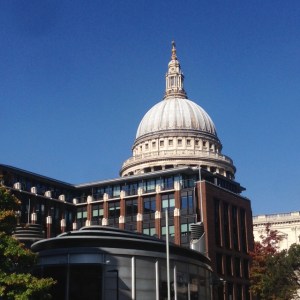
A few weeks ago, an opinion piece appeared in a UK newspaper with the title “Scientists find nirvana as hard to explain as to attain”. The article was about the launch of a course, endorsed by the Dalai Lama, by the group ‘Action for Happiness‘ and the release that week of the Office of National Statistics League table of personal well-being. While happiness and well-being are both evidently things that we want to encourage, what do we mean by quantifying well-being into a league table?
It seems to be part of what can be a tendency to ‘scientise’ aspects of our lives and experience, aspects that are clearly, when we think about them, not described by science. Coffee is not immune from this. Studies have been made of how we feel about drinking our coffee based on whether we drink coffee for pleasure or for the caffeine kick. Why is it that we feel the need to quantify something in order to demonstrate that we have an understanding of it? Does labelling something as ‘scientific’ give it greater credibility?
As described elsewhere, part of the thinking behind Bean Thinking is to explore the beauty and the connectedness that an appreciation of the science in a coffee cup can give us. But there is an important corollary to this. It is to celebrate the contribution of those other aspects of our thinking that allow us to appreciate beauty: Art, literature, history. Beauty is not a quantity that can be defined scientifically (although we all seem to have a mutual appreciation of beauty and, surprisingly often, of what is beautiful). Happiness is similar. We have an understanding of what happiness is but a quantitative evaluation of happiness eludes us.

In hindsight it seems that, entirely unintentionally, the tagline of Bean Thinking captured both of these aspects of meaning. “Where entertaining science meets good coffee“: Hopefully it is fairly easy to find the science on the website but good coffee? What do we mean by ‘good’. Is my version of “good” coffee the same as yours? Is ‘good’ in this context something that can be quantified (acidity, aroma etc) or something more, a word that incorporates aspects of the living conditions of the farmers who grow the coffee and the workers who pick the cherries at harvest time? In attempting to understand what is a ‘good coffee’ we may be tempted to define good as being a coffee having certain properties, a pH around X, a quantity of caffeine around Y and a fraction of 2-furfurylthiol (a chemical which contributes to coffee’s pleasurable aroma) of at least Z. This is a route that will lead us to instant!
But joking aside, by narrowly defining the word ‘good’ so that we feel that our understanding of it is scientific and therefore irrefutable, we have lost what we originally meant by good. Science is an important tool, one that helps us to understand (and to control) the world around us but it is not a philosophy. We can never use science to define a ‘good coffee’ in a way that we would all recognise as a good definition of good. Of course science can help us to decide aspects of a good coffee (the pH, the caffeine content etc. all contribute to a good cup) but we cannot use it, of itself, to define a good cup. The same must go for happiness and other aspects of our lives (can we measure a good school by its position in a league table for example?). We must always be on our guard against over-stating the proper limits of science. We cannot use it in defence of a metaphysical position. The strength of science lies in its being a key part of our tool box for examining and understanding the world.

Admitting that aspects of our definition of a good coffee are qualitative, arguable or even “subjective” does not devalue the meaning of the word good. The same applies to happiness and many other areas. Quantifying something can mean that we understand it less. Midgley has an interesting analogy in this context of the roles of different areas of our thought:
“[An image that is helpful] is that of the world as a huge aquarium. We cannot see it as a whole from above, so we peer in at it through a number of small windows. Inside, the lighting is not always good and there are rocks and weeds for the inhabitants to hide in. Is that the same fish coming out that we saw just now over there? And are those things stones or starfish? We can eventually make quite a lot of sense of this habitat if we patiently put together the data from different angles. But if we insist that our own window is the only one worth looking through, we shall not get very far.“*
According to the ‘quantitative’ measurement of well-being in the ONS survey, London is a relatively miserable place. The Action for Happiness group runs a Happy Cafe network which includes two London cafes: The Canvas and The Skittle Alley Coffee & Pantry. I have no idea as to whether such cafes can help us to live happier and more meaningful lives. I do know however that I won’t be able to find out whether they do so ‘scientifically’. I also know, that slowing down and spending five minutes contemplating my coffee, wherever I am, will help me to develop into a more rounded person. I am unable to define (scientifically) what I mean by rounded.
If you have a good definition of good, why not share it in the comments section below. Alternatively, if you are enjoying five minutes (or more) in a great cafe with something about it that is interesting to notice, why not think about writing it as a cafe-physics review?
* “The Myths We Live By”, Mary Midgley, was published by Routledge Classics, 2004




























